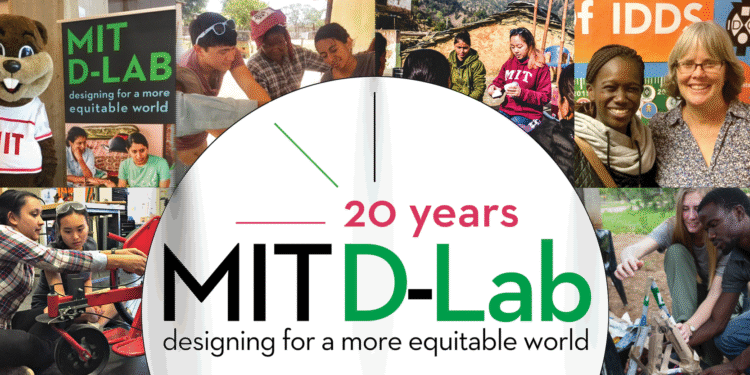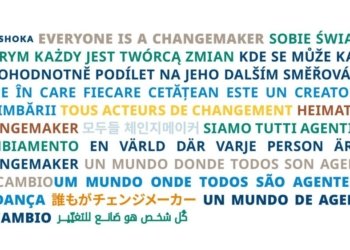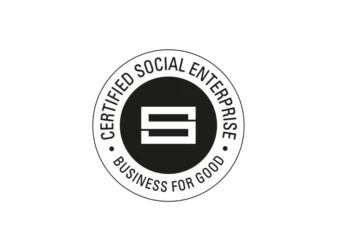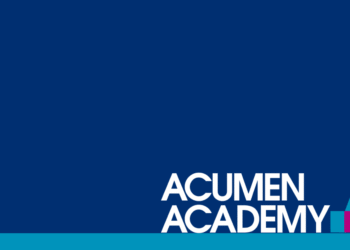What if the most effective solutions to global poverty aren’t created in isolated labs but emerge from genuine partnerships between world-class institutions and local communities?
This powerful question drives the innovative work happening through collaborative research programs. The approach combines academic rigor with practical, community-centered development.
Students engage in hands-on projects addressing real-world challenges. They work directly with people facing poverty to create sustainable solutions.
The program operates through three interconnected pillars: academic courses, research initiatives, and innovation practice. This structure ensures both theoretical learning and practical application.
More than 20 classes annually cover design, engineering, and social science topics. These programs emphasize participatory design principles and open-source technologies.
Teams develop practical tools and technologies that directly improve lives. The work spans energy systems, water filtration, agricultural innovation, and community resilience projects.
Key Takeaways
- Combines academic excellence with practical community development approaches
- Offers hands-on learning through more than 20 specialized courses annually
- Focuses on creating sustainable solutions through collaborative research
- Works with international partners to address poverty challenges
- Emphasizes open-source technologies that communities can maintain locally
- Connects student learning with real-world impact on people’s lives
- Builds long-term relationships with communities across multiple continents
Understanding MIT D-Lab’s Mission and Approach
True innovation emerges when experts listen to those facing challenges directly. This belief shapes a unique program’s core philosophy.
The Participatory Design Philosophy
Solutions work best when created together with local communities. This approach rejects imposing outside ideas.
Instead, teams co-create technologies with people who will use them. This ensures cultural fit and long-term sustainability.
The method values local knowledge as much as technical expertise. Communities become active partners in development.
Three Pillars of Impact
The program’s work stands on three connected foundations. Each pillar supports the others in creating meaningful change.
Academic courses form the first pillar. Over twenty classes teach participatory design and hands-on engineering.
Students learn to create practical solutions for real problems. They study design processes that put community needs first.
Research initiatives tackle specific global challenges. Teams focus on areas like cleaner cooking fuels and safe water systems.
These projects address critical poverty issues through innovation. Research groups develop technologies that communities can maintain.
Innovation practice builds equitable systems on the ground. Programs support local businesses and resilient economies.
Workshops teach creative capacity building and entrepreneurship. This helps communities develop their own solutions long-term.
All technologies aim for local construction and sourcing. This approach can create new markets around appropriate technology.
Academic Programs: Hands-On Learning for Global Development
Learning happens best when students tackle real problems alongside the people facing them. This approach transforms classroom theory into practical action that creates meaningful change.
Academic programs connect rigorous coursework with direct community engagement. Students develop skills while addressing actual development challenges worldwide.
Course Offerings and Curriculum
More than twenty classes annually cover diverse topics. These include design, engineering, manufacturing, and social science subjects.
Students from multiple institutions create rich learning environments. They bring different perspectives to complex global problems.
Courses like Introduction to Energy in Global Development teach practical skills. Students learn participatory design processes and engineering principles.
Hands-on shop work builds tangible problem-solving abilities. Critical thinking about development theories completes the learning experience.
Real-World Projects with International Community Partners
Classroom learning connects directly with field projects. International partners visit classes and host student trips.
These relationships continue beyond semester boundaries. Lasting connections form between students and communities.
Projects address immediate needs while building long-term solutions. Every design considers local maintenance and cultural fit.
Students see how their work impacts real people’s lives. This practical application reinforces academic concepts.
Professional and Online Education Opportunities
Learning extends beyond traditional campus boundaries. Professional courses reach working adults and career changers.
Inclusive Innovation: Designing for a Better World offers practical skills. Another course focuses on scaling technology in low-income markets.
An online program teaches lean research skills for interviews. This digital option expands access to valuable methodologies.
The workshop space provides tools for bringing ideas to life. Equipment supports everything from woodworking to steel fabrication.
This infrastructure turns concepts into working prototypes. Students test technologies before implementing them with partners.
Research Initiatives Addressing Global Challenges
Rigorous investigation meets community collaboration in specialized research groups. These teams tackle pressing issues affecting vulnerable populations worldwide.
Each project combines scientific excellence with deep cultural understanding. Researchers work alongside local experts to create meaningful change.
Biomass Fuels & Cookstoves Research
Clean cooking solutions transform lives in biomass-dependent communities. This research group develops efficient, low-emission cookstoves.
Their work addresses indoor air pollution and fuel efficiency. Families gain healthier homes and reduced fuel costs.
Prototypes undergo rigorous testing with community feedback. Final designs prioritize local manufacturing and maintenance.
Water Filtration and Evaporative Cooling Technologies
Access to clean water remains a critical global challenge. The water filtration team creates affordable purification systems.
Their technologies remove contaminants using locally available materials. Communities gain sustainable access to safe drinking water.
Evaporative cooling research extends food preservation in hot climates. Simple technologies help farmers reduce post-harvest losses.
Both initiatives prioritize ease of use and local repair. Solutions work within existing community infrastructure.
CITE: Comprehensive Initiative on Global Development Topics
This USAID-funded program explores cutting-edge development approaches. Research spans multiple interconnected focus areas.
Digital financial inclusion studies help expand economic access. Internet of things applications support smallholder agriculture.
Machine learning research addresses complex development challenges. Local innovation systems receive detailed examination.
The initiative collaborates with universities across partner countries. Findings are shared openly to maximize global impact.
Additional research groups study local innovation ecosystems and lean methodologies. The local innovation team examines how communities develop their own solutions.
Lean research creates respectful approaches for low-resource settings. All groups maintain strong partnerships with international organizations.
Research outcomes become teaching materials for development courses. Students learn from real-world case studies and data.
Innovation Practice: Building Equitable Solutions
Real change happens when innovative ideas move from theory to practice in communities worldwide. The innovation practice team transforms concepts into tangible improvements for people facing poverty.
This approach focuses on implementing inclusive processes in real settings. Teams build better products and create more equitable economic systems.
Humanitarian Innovation Programs address urgent needs in crisis-affected areas. These initiatives develop appropriate technological solutions for emergency situations.
Teams work quickly to create tools that save lives and reduce suffering. All designs prioritize local availability of materials and repair capabilities.
Inclusive Regional Economies Development creates fairer value chains in underserved regions. This work builds economic opportunities that benefit entire communities.
Programs help develop local manufacturing and business capabilities. The approach focuses on sustainable impact rather than temporary fixes.
Creative Capacity Building Workshops teach community members to solve their own problems. Participants learn to identify challenges and build solutions using local materials.
These hands-on sessions empower people to become innovators themselves. The skills learned continue creating value long after workshops end.
Co-Design workshops bring together diverse groups to develop solutions collaboratively. Community members, students, and experts all contribute their unique perspectives.
Innovation & Entrepreneurship Ecosystems workshops help build supportive environments for local business development. These programs often lead to new manufacturing capabilities within communities.
The Scale-Ups Fellowship supports entrepreneurs expanding technologies that address poverty challenges. This program helps scale solutions that have proven effective in local contexts.
All innovation practice initiatives emphasize solutions that communities can maintain and expand independently. The goal is creating lasting change through local ownership and capability building.
Student Impact: Transforming Lives Through Practical Solutions
Student projects create meaningful change by addressing immediate needs in underserved communities worldwide. These hands-on initiatives demonstrate how technical skills can directly improve living conditions and economic opportunities.
Academic programs connect classroom learning with real-world problem solving. Students develop practical solutions while building lasting relationships with international partners.
Recent Projects Supporting Farmers in Afghanistan and Cameroon
This semester, students developed innovative tools for agricultural challenges. They worked directly with farming communities to create appropriate technologies.
In Afghanistan, teams designed micro-irrigation systems with local partners. The Ecology and Conservation Organization helped implement these water management solutions.
Cameroon projects focused on poultry farming improvements. Students created systems to enhance animal welfare and productivity for rural farmers.
These agricultural initiatives address food security challenges. They help communities build more resilient farming practices.
Weatherization Strategies for Argentine Communities
In Bariloche, Argentina, students tackled housing conditions in informal settlements. They implemented weatherization strategies to improve home comfort and efficiency.
The project involved building model homes to demonstrate effective techniques. Teams used heat sensing cameras to show temperature differences visually.
This approach helped convince both residents and policymakers about the value of weatherization. The visual data made the benefits clear and measurable.
Improved housing conditions directly impact health and quality of life. These projects show how simple technologies can make significant differences.
Long-Term Relationships with International Partners
Students maintain ongoing connections with community partners across multiple continents. These relationships extend far beyond individual projects or semesters.
Communication continues through group chats and subsequent visits. Many students discover a lasting passion for international development work.
Energy course participants have collaborated with partners for over seven years. Past projects include innovative solutions in Ghana, Uganda, and Mali.
These initiatives created charcoal for cookstoves and addressed aquatic weed problems. Teams also developed brick evaporative coolers for food preservation.
All projects consider scalability from the beginning. Teams evaluate whether solutions can expand to regional or national levels.
The impact extends beyond immediate technological fixes. Programs build local capacity and create markets for sustainable tools.
This approach ensures communities can maintain and expand solutions independently. Long-term partnerships create lasting change rather than temporary assistance.
Conclusion: The Lasting Impact of Collaborative Innovation
True transformation happens when academic rigor meets community wisdom. This powerful combination creates change that lasts for generations.
Students discover new career paths through hands-on experience. Many launch businesses based on class projects that address real-world needs.
Communities gain sustainable tools and local innovation skills. They build resilient economies that continue growing long after projects end.
The open-source approach ensures technologies spread widely. Other organizations can adapt solutions for their own development challenges.
This work shows how thoughtful engineering can improve lives worldwide. It proves that meaningful change comes through equal partnership and shared learning.
FAQ
What is the main goal of the D-Lab program?
The program focuses on collaborative research and design to create practical tools and technologies that help communities facing poverty. It brings together students, researchers, and local partners to develop solutions that improve lives and support sustainable development.
How do students get involved with global development projects?
Students join hands-on classes and work on real-world projects with community partners worldwide. These projects address specific challenges, such as agriculture, energy, or water access, allowing students to apply their skills while making a meaningful impact.
What types of courses are offered through the academic programs?
The curriculum includes courses on design, engineering, and social aspects of global development. Topics range from creative capacity building to specific technologies like cookstoves or water filtration systems, all emphasizing participatory approaches and community engagement.
Can professionals or non-students participate in D-Lab initiatives?
A> Yes, there are online education opportunities and workshops for professionals, community leaders, and others interested in innovation practice. These programs focus on building skills and developing equitable solutions for various global challenges.
What are some examples of recent projects led by students?
Recent efforts include supporting farmers in Afghanistan and Cameroon with agricultural tools, and helping Argentine communities with weatherization strategies. These projects emphasize long-term relationships and sustainable outcomes based on local needs.
How does the program ensure solutions are culturally appropriate and effective?
Through its participatory design philosophy, D-Lab works closely with community partners throughout the research and development process. This collaboration ensures that technologies and strategies are tailored to local contexts and have a greater chance of success.
What research areas does D-Lab focus on?
Key research initiatives include biomass fuels and cookstoves, water filtration, evaporative cooling, and broader topics under its comprehensive initiative on global development. These efforts aim to address critical issues affecting underserved populations.
How does D-Lab contribute to building inclusive economies?
The innovation practice wing runs programs focused on humanitarian innovation and regional economies development. By fostering creative capacity and supporting local entrepreneurs, it helps communities build resilient and equitable economic systems.





